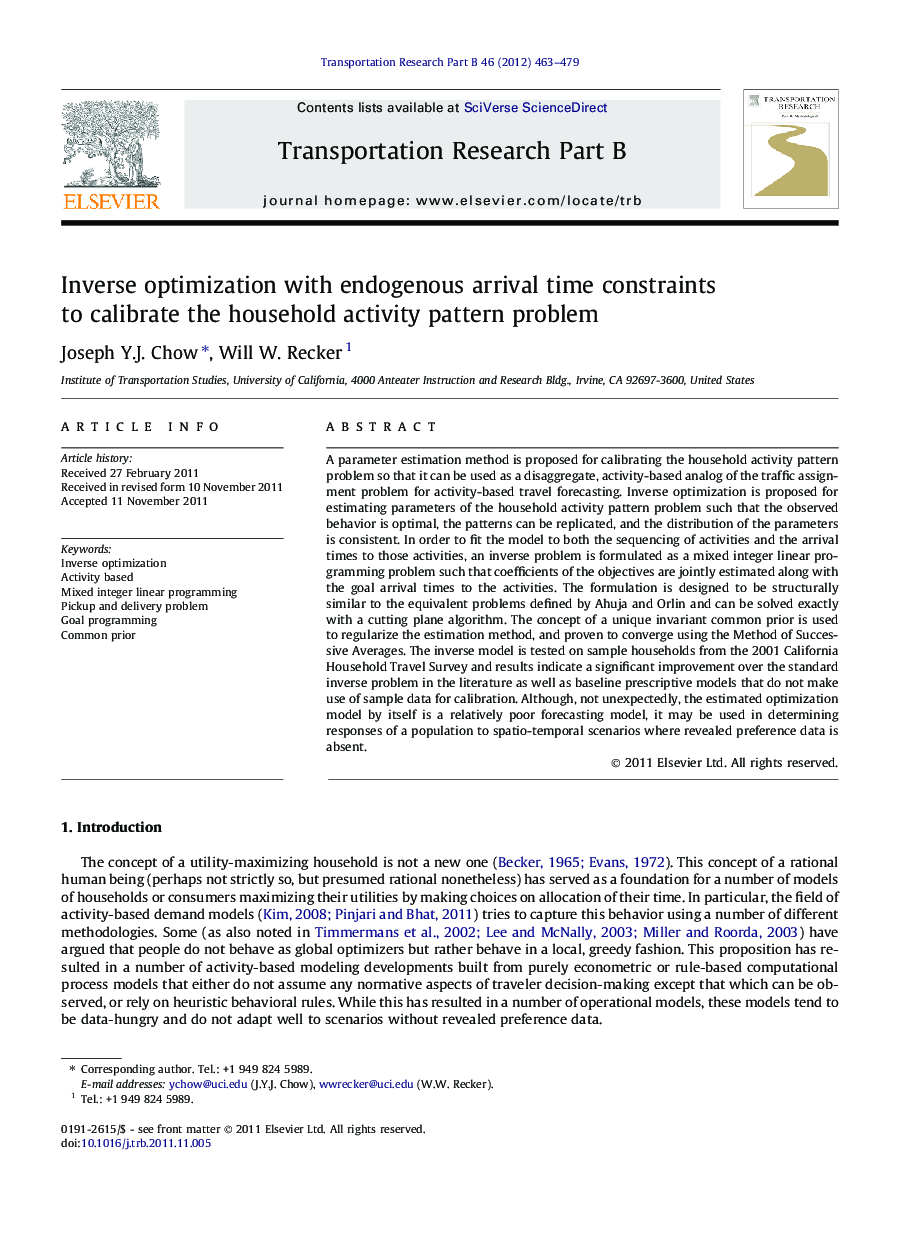| کد مقاله | کد نشریه | سال انتشار | مقاله انگلیسی | نسخه تمام متن |
|---|---|---|---|---|
| 1132460 | 955780 | 2012 | 17 صفحه PDF | دانلود رایگان |

A parameter estimation method is proposed for calibrating the household activity pattern problem so that it can be used as a disaggregate, activity-based analog of the traffic assignment problem for activity-based travel forecasting. Inverse optimization is proposed for estimating parameters of the household activity pattern problem such that the observed behavior is optimal, the patterns can be replicated, and the distribution of the parameters is consistent. In order to fit the model to both the sequencing of activities and the arrival times to those activities, an inverse problem is formulated as a mixed integer linear programming problem such that coefficients of the objectives are jointly estimated along with the goal arrival times to the activities. The formulation is designed to be structurally similar to the equivalent problems defined by Ahuja and Orlin and can be solved exactly with a cutting plane algorithm. The concept of a unique invariant common prior is used to regularize the estimation method, and proven to converge using the Method of Successive Averages. The inverse model is tested on sample households from the 2001 California Household Travel Survey and results indicate a significant improvement over the standard inverse problem in the literature as well as baseline prescriptive models that do not make use of sample data for calibration. Although, not unexpectedly, the estimated optimization model by itself is a relatively poor forecasting model, it may be used in determining responses of a population to spatio-temporal scenarios where revealed preference data is absent.
► Extended HAPP to soft time windows with goal programming approach.
► Formulated an inverse MILP to estimate objective coefficients and constraints of HAPP.
► Established regularization through an invariant common prior solved via Method of Successive Averages.
► Estimated parameters for a 78-sample set of households from the 2001 California Household Travel Survey.
► Argued for HAPP as an analog of traffic assignment problem for activity-based modeling.
Journal: Transportation Research Part B: Methodological - Volume 46, Issue 3, March 2012, Pages 463–479